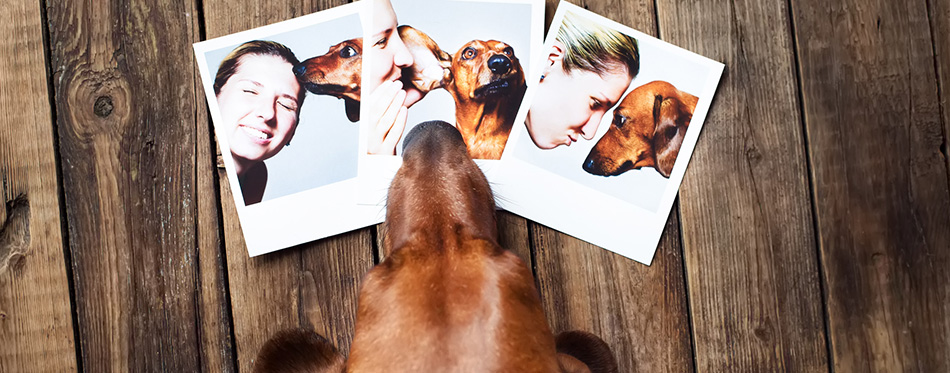People have this notion that pets like dogs only live in the moment. This means they only remember the things that they experience at a certain period of time. When that period lapses, they no longer have any recall of the experience. However, there are many man-dog experiences that dispute this notion. You can look at the progress of your dog during training and you can see that “memory” is somehow at work. Common sense dictates that dogs do remember. But the question is, is this “remembering” the same as the memory we have as humans? How long does a dog’s memory last?

Short-Term vs. Long-Term Memory
On the average, dogs can retain present information for about 5 minutes. Some dogs may exhibit shorter working memories than others. This is dependent on the strength or the impact of the “event” that created the memory. If the event has a significant effect on the dog, then it is possible that it will remember it for up to 10 minutes or so.
Among humans, short-term memory allows us to keep and process information within a certain period of time. This is important for problem-solving processes and for other cognitive functions. It is essential in learning, language, reading, and math.
It is not known whether the short-term memory of dogs can also help them in their problem-solving tasks. This is because there aren’t that many studies conducted on the subject. What is evident is that intelligent breeds like Border Collies and Poodles seem to display the same working memory as humans. They show this in the speed at which they can master a given trick, requiring only one attempt for them to get it right.
On the other hand, dog owners and pet lovers can attest to the presence of long-term memory in dogs. It is evident in the different behaviors we see in real-life events. For example, you can leave your dog with your family for several months or a few years. When you return, you can always expect your dog to show the same kind of enthusiasm that it always displays whenever it is happy and excited. If it does not have a memory of your existence, then the dog will not be able to show such a behavior.
This long-term memory is not only evident in dogs that have positive life experiences. Dogs that experienced negative life situations can also have long-term memory of painful events. For instance, dogs that come from cruel owners can show fear of certain events. They may be fearful of tall men or people with certain styles of hat. What is happening is that they are relating these “things” to a negative event or negative memory.
Memory or Imprint?
We know that dogs have long-term memory. However, there is an ongoing debate whether it is right to call it as memory or a simple imprint of an event. Let us look at how different a memory is from an imprint.
When we talk about memories, we talk about all aspects of a particular event. We can create mental images of the event. We can relive the colors, scents, and flavors of the incident. We can also “remember” how we felt or reacted during such an event. That’s why we can make elaborate stories from our long-term memory.
Imprints, on the other hand, represent only a certain aspect of a particular event. Dog behaviorists say that this is what dogs have – a fraction of a memory. For example, your dog sees a vacuum cleaner in your house. It doesn’t know that it is a vacuum cleaner, of course. What it knows is that it is big. It tries to explore it, sniffing around. If you turn the vacuum cleaner on all of a sudden, it will create a loud noise. This can startle your dog and it may run in a panic.
Related Posts: Vacuums for Pet Hair and Dyson Pet Vacuum
It is this fear of the loud, large, and strange object that gets imprinted on your dog’s brain. It will not remember how it felt the first time your dog saw the object. It will also not remember that it sniffed and probed the object. What it does “remember” is that this large object produces a loud noise that made it run in panic.
This is an imprint and it is what dogs will remember. It is also what will form as their long-term memory. This can have serious implications in the way that dogs learn or experience things. It is also for this reason that positive reinforcement training works while aversive training doesn’t. Sure, the dog will “remember” not to do an undesirable behavior but it will “remember” the negative imprint, not the positive.

Associative Memory and Imprints
Another way of looking at an imprint is that of associative memory. We are looking at a fragment of long-term memory.
Associative memory occurs when a dog remembers something by associating it with something that they see, hear, or smell. They can then make the “connection” whether it is something positive or negative.
For example, if you always walk your dog right after doing some work on your computer, they can associate the sound of a powering-off computer with the chance to go outside. This is something “pleasurable” or rewarding for the dog. Every time your dog hears the sound of the computer shutting down, it will already get up and approach it. It can already “associate” the sound of the computer with the next activity – going out for a walk.
Dogs are very particular about the things that their human masters do. Some of the things that we do can trigger their associative memory or imprint. They know that the thing we do will result in something that they want. Take the associated event out of the equation and you extinguish the memory.
For instance, in our example above, what if we muted our computer so that it will not make a sound when we shut it down. The dog will have no idea why we’re getting up from our chair. There is no sound that they can associate with the chance to go outside.
This is also the reason why we cannot and should not punish our dogs if they do something we don’t like. This is the case if there’s a considerable length of time between our reaction and the event. For example, you left the house for several hours. Upon your return, you discovered your house to be in complete disarray. If you scold at your dog for its “misbehavior”, it will not know why you’re yelling at it. What gets imprinted in its memory is the yelling. It is sad that it cannot associate it with anything else. It will learn that your reaction is a form of unfair discipline.
The same is true with the ongoing notion that rubbing a dog’s nose in its own urine can teach it not to urinate inside the house. This is a very popular misconception. The dog has no memory of urinating inside the house. What it will remember is the act of you rubbing its nose on the urine. This can instill confusion and fear in your dog.
Another example is if you let your dog ride in your car only when you go to the vet. It will learn to associate the car with an unpleasant experience. If you decide to travel during the holidays, the dog may not want to go in your car. The dog has already an imprint of the car being equivalent to an unpleasant experience.
Addressing “Bad” Memories
It is inadvertent that we foster the creation of “bad” or “negative” memories in our dogs. When we bring our dog to the vet clinic, we may notice it to be shaking in fear. If this is not your pet’s first time visiting the vet, it can still be anxious if the prior visits were not pleasant. Your dog doesn’t know why it is scared. All it remembers is that it was in the same room when it first got scared. It is this association with a negative experience that is causing the problem.
One way you can address such “bad” memories is by replacing the negative associations with more positive experiences. In our example, you can bring your pet to the vet clinic without doing any procedure or activity on your dog. You and the vet can think of ways to make the dog feel more comfortable this time around. You can do this several times. The tricky part is to look for a positive experience that is more powerful than the fear your dog associates with being in the clinic.
In cases where the negative experience is more profound, it may be difficult to replace or change the associative memory. However, it is still possible with perseverance and patience.
The short-term memory of dogs may only last several minutes but its associative long-term memory can last a lifetime. It is inherent on pet parents to create more positive experiences for dogs to associate their memory with.
Related Post: Dog Toys

